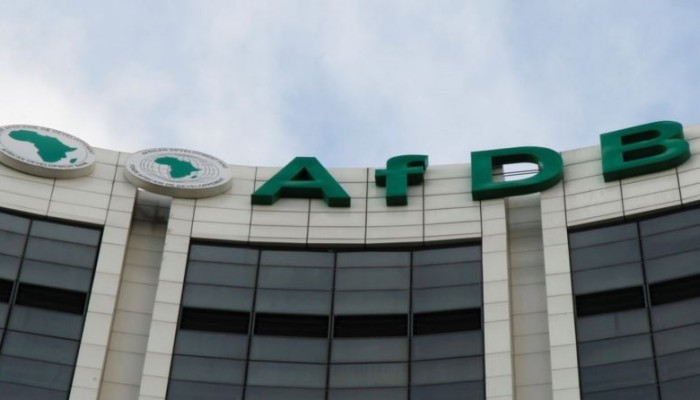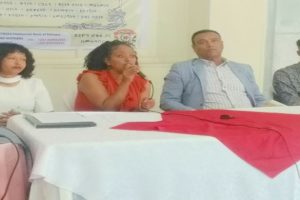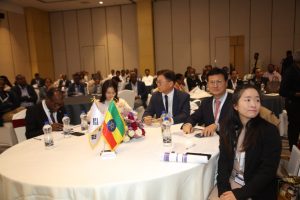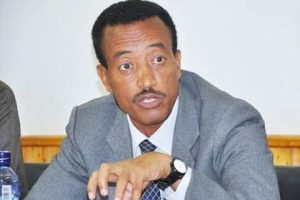
Increasing numbers of women can be seen around the goat and sheep pens of Saria, in the province of Boulkiemdé, in Centre-West Burkina Faso. But not for the typical scenario of animal herders; nowadays, they are there because they own them. One of them, Salimata Kaboré, runs a small pen with four animals- two ewes and two rams, narrated by Africa Development Bank.
“I built the pen myself with help from the Sahel 1 programme to build resilience to food security, which gave us animals to raise. I’m taking great care because I’m hoping to have a dozen animals in two- or three-years’ time and to gradually become a larger sheep farmer, like the men. Meanwhile, I can meet my family’s needs with my maize and cowpea crops,” said the mother of three.
Tapsoba Marietou, another entrepreneur from Saria has become a go-to person in her area, for her experience in breeding poultry. Young people from Saria say that that they often visit her hen house to learn from her experience. Marata, yet another happy beneficiary of the programme, received 10 hens and one cock to launch her business plan in Torodo, in the Central Plateau Region, and is now celebrating the birth of six chicks.
These women are among 1,250 beneficiaries of steps to promote rural entrepreneurship and strengthen nutrition within the broader framework of Project 1 of the Programme to build Resilience to Food and Nutrition Insecurity in the Sahel. Established in 2015 in Burkina Faso, this project is intended to fight malnutrition and extreme poverty that affects some 5 million people in several parts of the country: Boucle du Mouhoun, the Central Plateau, the Centre-West, the Centre-South and the Centre.
Its main financial partner, the African Development Bank has released 19.64 billion CFA francs, that is, 87.9 percent of the total budget. The Burkina Faso State has contributed 2.7 billion CFA francs and project beneficiaries have made a contribution of 500 million CFA francs. Many projects have been completed between 2015 and 2018, crucially including the restoration of three irrigation dams. “Our dam had fallen into disrepair and the water shortage had driven me to leaving the region,” said Amidou Bourahima, a fisherman from Bani, in the Sahel. Many of us went to Côte d’Ivoire. Personally, I spent two years in Saudi Arabia. I was glad when I got back and found that the dam had been rebuilt, because it gives our community renewed hope and life.” “Life was wretched before they rebuilt the dam,” recalls Hama Amadou Cissé, president of the village development committee at Bani. “It could take you more than four hours just to get a little water at the water point. Even the plants couldn’t withstand the lack of water. Now, the project has more than relieved us.”
This project has trained 305 young people in rural entrepreneurship and constructing business plans. The young people of Saria who won the contest to write the best business plans in the project, have received carts, watering cans, protection grids and sprayers and have had the benefit of working capital of 100,000 CFA francs to kick-start their projects. Kaboré W. Adjaratou and Kaboré Rémis were awarded loans under the Economic Empowerment Programme for Young People and Women. They have started their projects and started repaying their loans.
“Life was wretched before they rebuilt the dam”, said Hama Amadou Cissé
A great deal of work has been successfully completed in the space of just 3 years: the rebuilding of 3 dams, the development of 400 hectares of rice lowlands and 38 hectares of irrigated areas, the construction of 3 livestock-water storage tanks, six 250-tonne animal-feed stores, 9 agricultural input shops, twenty 100-tonne warrantage stores, twenty-two 250-tonne warehouses, 200 family latrines, 2 phytosanitary stations, 3 standardized health centres, 1 simplified solar livestock-water supply system and the signage of 13 km of water-access corridors. This is not to mention the 26 livestock and 60 community boreholes, a fish farm, 11 multifunctional platforms with non-wood forest-product processing units and 10 vegetable gardens.
The signs of change are equally visible in the village of Torodo, on the Central Plateau, one hundred kilometres from Ouagadougou. Fati Dipama belongs to the 100-member Tégawendé Association. Organized into four subgroups, the women of Torodo look after the management of the platform and offer grain milling and husking services, as well as cracking and grinding services for shea and peanuts, in addition to a phone and vehicle battery-charging service.
This platform is also a processing unit for non-wood forest products. It is used to make shea butter, soap and shea-butter based ointment, liquid soap soumbala and soumbala mustard. “Not only did we receive mills, we were also trained in how to look after them, and that’s good for us. We have been trained in how to process non-wood forest products such as shea and locust beans. Our products are sold in the market place. Thanks to their mills, local people no longer have to travel great distances to mill their grain products. We’ve gained time,” said Dipama, who went on to add, “Crops that we want to sell, we process ourselves and this helps us get good prices and have better incomes.”
Like Tégawendé, other women’s associations are taking active roles in managing their daily activities. On Goumédyr site, in Réo, in Sanguié province, a group called “Yidjan Durega” that is also a beneficiary of the project manages a vegetable garden that produces two species, Moringa oleifera and Adansonia digitata, both recognized for their nutritional qualities and particularly for their contributions to infant diets. In Kamanlélé, members of the Relwendé Association grow up to 30 tonnes a year for sale of cowpeas, an African bean variety that is also well-known for its nutritional qualities and drought-resistance. The next step is the creation of a local microfinance institution to support their business activities.
To further boost nutrition in the region, the project has supported the health district of Manga to promote nutrition practices for infants and young children, by establishing child-nutrition help and support groups known as GASPAs. GASPAs use interpersonal communication strategies to help change behavior. Women are brought together in small groups according to their physiological status, especially, pregnant women, nursing mothers, and mothers of children aged under 2 years.There, they learn good nutrition and health and hygiene practices and are offered cooking demonstrations. This programme has led to the establishment of 1602 GASPAs, which have reached out to 20,081 women.
Meeting once a month since July 2016, these groups have led their members learn better nutrition practises and to a fall in the numbers of malnourished children.
Dabré Bimata has been a GASPA member since the beginning: “I have three children. When I had my first two, I wasn’t a member of a support group. I didn’t know enough about children’s diets, so I gave them water and herbal teas. Both my children had repeated stints in hospital. By the time I was pregnant with my third child, the GASPA had been set up and I joined it. I was given a lot of information on pregnancy care and infant feeding. When I gave birth, I breast-fed my child for the first 6 months. I noticed that he was in good shape and didn’t fall ill. I took him to the health centre for growth monitoring and immunization. He is very different from the other two; he hasn’t been ill like they were.”
In the Tuiré Health and Social Advancement Centre, four villages are supported by the P1-P2RS nutrition support programme. The nurse in charge of the centre reports that no cases of severe acute malnutrition have been detected there since 2017. The beneficiaries of GASPA have even been given dairy goats to dietary diversity of children and pregnant and nursing mothers.
The GASPAs in Tuiré, have the benefit of a vegetable garden, mainly composed of moringa and baobab trees. Their produce is used for cooking demonstrations during events. Moringa powder is sold at the health centre pharmacy and the proceeds from sales are used to help buy new inputs.
BY MEHARI BEYENE





